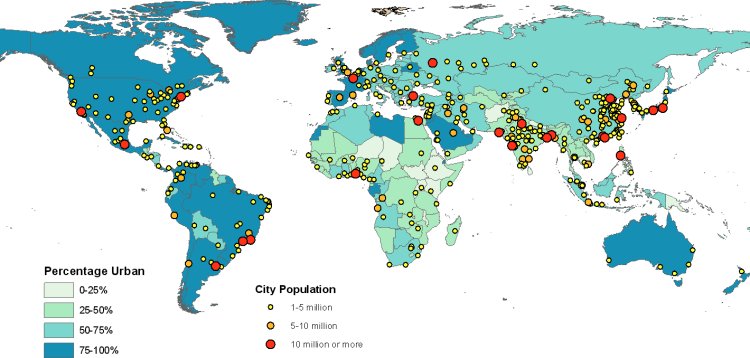Why your footprint will misprint if not correctly done ?

By: Dallal bouguenina
Waste generation is often discussed yet rarely introduced in the way that proclaims effective and meaningful management solutions to the current dilemma. That lays in the huge masses generated each day which will eventually swarm the society we live in to a society that is more prone to epidemics, diseases and environment/ ecosystem Clusters falling down...
We all have a responsibility to take care of our planet and make sure it remains a healthy and habitable place for future generations. By changing our habits and adopting a sustainable lifestyle, we can all make a difference. In this Article, we will share with you some tips for reducing your carbon footprint and waste generation. From using reusable bags and water bottles to composting and reducing energy use, we will provide practical and easy-to-implement solutions that will help you live a more sustainable life. Let's work together to make the world a better place!
Where are we now?
The amount of waste worldwide is a complex and ever-changing problem, as it depends on a variety of factors such as population growth, economic development and consumption patterns.
According to the World Bank, global waste production is expected to increase from 2.01 billion tons in 2016 to 3.4 billion tons in 2050. This growth is mainly driven by population growth and urbanization, especially in low- and middle-income countries.
In addition to municipal solid waste, other types of waste such as e-waste, hazardous waste and plastic waste pose special challenges. For example, the United Nations estimates that 50 million tons of e-waste are generated worldwide each year, of which only 20% is disposed of properly.
The amount of waste generated each year in the United States alone is —about 267 million tons of household solid waste and industrial waste—has a devastating impact on the world in which we live. As more land is used for factories and landfills, we risk degrading natural habitats, polluting ecosystems and losing biodiversity. The production and processing of fuels, materials and food accounts for 90% of biodiversity loss and 90% of water loss worldwide. And the waste we throw away contaminates habitats where wildlife once thrived, making migration, reproduction and everyday life difficult and killing more than 1,000,000 animals each year.
What is a carbon footprint and why is it important to reduce home
A carbon footprint is the total amount of greenhouse gasses that are produced to support human activities, such as driving, heating and cooling, and manufacturing. Greenhouse gasses, such as carbon dioxide and methane, contribute to global warming. Carbon footprint is important to reduce because global warming is causing serious environmental issues such as melting glaciers, rising sea levels, and extreme weather conditions. It is necessary to reduce our carbon footprint to decrease the speed and intensity of these changes. We must reduce our carbon footprint to preserve our planet for future generations. It is essential that we take responsibility for our actions and reduce our impact on the environment. We can achieve this by making small changes in our daily lives, such as using public transportation, eating less meat, and reducing our energy consumption. Every little change that we make can have a significant impact on the environment. By reducing our carbon footprint, we can help protect the planet and promote sustainability.
Tips for reducing carbon footprint afreepics,
Reducing your carbon footprint doesn't have to be a big undertaking. There are plenty of things you can do at home to help reduce your impact on the environment. One simple tip is to switch to energy-efficient light bulbs.
These bulbs use a lot less energy than traditional bulbs, and they're just as bright. Another tip is to turn off lights and electronics when you're not using them. This one is simple, but it can make a big difference in your energy savings. Another way to reduce your carbon footprint is to use reusable bags when you go shopping.
This way, you won't need to use plastic bags, which can take hundreds of years to biodegrade. When it comes to food, try to buy locally sourced products.
This will help you support local farmers and reduce the carbon footprint associated with transporting food from far away. Lastly, try to reduce your water consumption.
Take shorter showers, fix any leaks you have, and avoid running the faucet while brushing your teeth. These are just a few tips for reducing your carbon footprint at home, but there are many more small things you can do to make a difference.
Tips for reducing waste generation at home
Reducing waste generation at home is one of the most important steps you can take towards a sustainable lifestyle. Here are some tips that can help you reduce waste and live more sustainably:
- Use reusable bags: Instead of using plastic bags which end up in landfills and oceans, use reusable bags when you go grocery shopping or running errands.
- Buy in bulk: Buying in bulk reduces packaging waste and saves money. Try to buy items like rice, pasta, and beans in bulk and use reusable containers to store them.

- Say no to single-use plastic: Avoid using single-use plastic products like straws, water bottles, and cutlery. Instead, use reusable options like stainless steel straws and water bottles.

- Compost: Composting is a great way to reduce food waste and create nutrient-rich soil for your garden. You can compost kitchen scraps, yard waste, and even paper.
- Choose products with minimal packaging: When shopping for groceries or other household items, look for products with minimal packaging. This can help reduce the amount of waste you generate.
- Repurpose and donate items: Before throwing away an item, think about whether it can be repurposed or donated. Old clothes, for example, can be turned into cleaning rags or donated to a charity. By implementing these tips, you can reduce your waste generation and live a more sustainable lifestyle.
Conclusion.
In conclusion, reducing your carbon footprint and waste generation is something that we can all do to help make the world a better place. It doesn't have to be complicated or expensive. Simple changes to our daily habits can make a big difference. By using energy-efficient light bulbs, turning off electronics when not in use, reducing our water usage, and recycling properly, we can all make a positive impact on the environment. It's also important to support companies and brands that prioritize sustainability and eco-friendliness. By choosing products made from sustainable materials and supporting environmentally responsible practices, we can all help to create a better future for ourselves and the planet. Remember, every small step counts, and by working together, we can make a big difference.
Source :
Intergovernmental Panel on Climate Change (IPCC), the United Nations Framework Convention on Climate Change (UNFCCC), the Environmental Protection Agency (EPA).
For the pictures : the economist, statistica, eurostate, freepics
I'll attache the link in here just in case:
https://www.statista.com/chart/amp/18732/waste-generated-countrais


